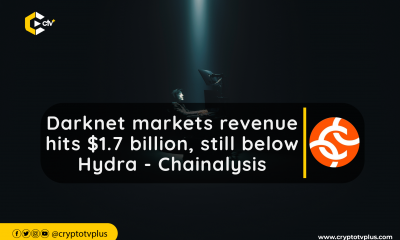News
Over 150K pump & dump tokens launched in 2023 – Chainalysis

According to Chainalysis’ 2023 Web3 security report, between January and December 2023, a total of 370,000 tokens were introduced on the Ethereum network, with approximately 168,600 becoming tradable on at least one decentralized exchange (DEX).
The report shows a rise in new tokens introduced monthly since mid-2022, nearing 50,000 recently. However, despite the increase, these tokens only contribute 1.3% to all trading on DEX platforms.
Out of 370,000 tokens, over 150,000 exhibit characteristics of pump-and-dump projects. According to Chainalysis, 54% of ERC-20 tokens listed on DEXes in 2023 show patterns that could indicate pump-and-dump schemes.
Pump-and-dump schemes trick investors by boosting a cryptocurrency’s price through coordinated efforts. After attracting buyers and causing a quick price jump, the schemers sell their assets, leading to a crash and leaving later investors with less valuable holdings. These schemes use fraudulent tactics, exploiting market manipulation to deceive and profit at the expense of investors.
Less liquidity of most tokens
Per the report, in 2023, fewer than 14.1% of newly launched tokens usually reach over $300 in DEX liquidity within a month. At the report’s release, only 5.7% of 2023-launched tokens had achieved this.
Although this percentage is higher than in the past two years, 2021 and 2022, it indicates that many tokens face challenges in easy trading with popular assets like ETH, causing significant price changes due to low liquidity.
The report highlights several factors that hinder efforts to increase trading volumes for tokens. As tokenization gains popularity, introducing new tokens in a saturated market becomes increasingly difficult. The heightened competition poses challenges for tokens seeking attention and liquidity.
Additionally, it is important to note that low trading volumes may sometimes result from pump-and-dump schemes. In such instances, individuals or groups employ manipulative strategies to artificially boost a token’s price, enticing investors to buy in before swiftly selling their holdings, causing a significant decline in the token’s value.
Read also; OFAC cryptocurrency sanctions rise by over 100%

























Pingback: Crypto for terror? Chainalysis debunks myths, reveals tactics | CryptoTvplus - The Leading Blockchain Media Firm